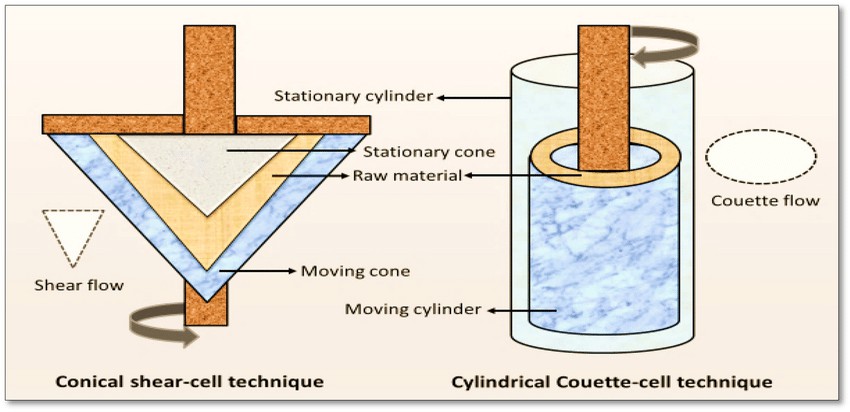
### A Mechanical Breakthrough Could Transform Plant-Based Meats and Eating Practices
Enthusiasts of meat and environmental supporters have frequently found themselves in conflict, particularly regarding the ecological ramifications of mass animal farming. Nevertheless, a recent advancement from Stanford University may pave the way for reconciliation. A cohort of engineers has made headway in enhancing plant-based meats by addressing one of their primary limitations: texture. Their state-of-the-art research employs mechanical testing and machine learning to examine plant-based options, enabling them to more accurately mirror the sensory attributes of actual meat. This innovation could redefine dining practices worldwide, paving the way for the broader acceptance of more sustainable food choices.
—
### A Mechanical Approach to Texture
One of the major obstacles in persuading conventional meat aficionados to experiment with plant-based alternatives is the difficulty of imitating the texture of animal flesh. Beyond taste, the sensation of meat during chewing—its firmness, moisture, and resistance to disintegration—constitutes an essential component of the culinary experience. The engineering team at Stanford University, under the guidance of Professor Ellen Kuhl from the Department of Mechanical Engineering, has created an inventive method to address this challenge.
“We were astonished to discover that contemporary plant-based products can emulate the entire texture spectrum of animal meats,” Kuhl remarks. This insight stems from a newly designed testing apparatus as part of a research project spearheaded by Skyler St. Pierre, a graduate student in the lab.
The team evaluated eight distinct food items, encompassing traditional animal-derived meats (such as hot dogs, sausages, and turkey) and their plant-based counterparts, in addition to tofu (including both firm and extra-firm types). These products underwent mechanical assessments focusing on tension, compression, and shearing—actions that replicate the chewing experience.
“These three loading methods represent the mechanics of chewing,” Kuhl elaborated. The data gathered from these assessments were analyzed using a neural network, a sophisticated machine learning technique, which enabled the development of equations to measure and anticipate texture characteristics.
—
### Insights for a Greener Future
Enhancing the appeal of plant-based meats carries substantial implications for sustainability. The global drive to reduce greenhouse gas emissions has highlighted the ecological effects of animal agriculture, which significantly contributes to climate change, ecological degradation, and the rise of antibiotic resistance. Conversely, plant-based alternatives present a much more environmentally friendly option—some estimates suggest they generate merely half the emissions of animal meats.
Nonetheless, despite these environmental advantages, the uptake of plant-based meats has been sluggish—particularly among dedicated meat consumers. Market research indicates that around a third of Americans are strongly inclined to purchase plant-based products. The team at Stanford is optimistic that advancements in the textural quality of plant-based meat offerings could encourage a greater number of individuals to consider sustainable choices.
The findings of their study were promising. When mechanically assessed, plant-based sausages and hot dogs closely resembled their animal-based counterparts in both firmness and overall mechanical functionality. Indeed, these resemblances were corroborated by a secondary sensory investigation involving human participants. The alignment between human perception and mechanical results sets the stage for a more efficient approach to developing plant-based meats, enabling producers to decrease their dependence on subjective tasting panels and concentrate on accurate, objective texture metrics.
Beyond their specific discoveries, the Stanford researchers highlighted the significance of collaboration in the progression of food science. By sharing their data publicly, the group aims to stimulate innovation within the sector and encourage wider participation. “Without sharing knowledge and collaborating, how can we expect to create a meat alternative together?” St. Pierre emphasized, stressing the importance of transparency and cooperation.
—
### An Advancement in Consumer Choices
What renders this scientific advancement particularly thrilling is its ability to reshape consumer choices and menus on a global scale. Presently, despite a growing interest in vegetarian and vegan lifestyles, numerous individuals hesitate to transition due to the sensory enjoyment they associate with consuming meat. While flavor has improved significantly in recent years thanks to companies like Beyond Meat and Impossible Foods, texture has continued to be a challenging barrier.
This progress in mimicking meat texture may finally bridge that divide. Once plant-based options can authentically duplicate the sensation of animal meats in the mouth, a greater number of consumers may be inclined to change their culinary preferences. This shift could not only reduce the environmental impact of diets worldwide but also inspire innovation with sustainable menus in both restaurants and home kitchens.
—
### Glossary
– **Plant-Based Meat:** Food products derived from plant ingredients, designed to imitate the flavor, texture, and appearance of animal meats, providing a more sustainable alternative.
– **Mechanical Testing:** A method used to evaluate materials by applying various forces, such as tension, compression, and shear, to determine their properties and behavior.
– **Neural Network:** An advanced machine learning model that mimics the structure of the human brain, aimed at uncovering patterns and relationships in data through computational evaluation.
– **Stiffness:** A property of materials indicating their resistance to deformation when subjected to external force.
– **Sensory Survey:**